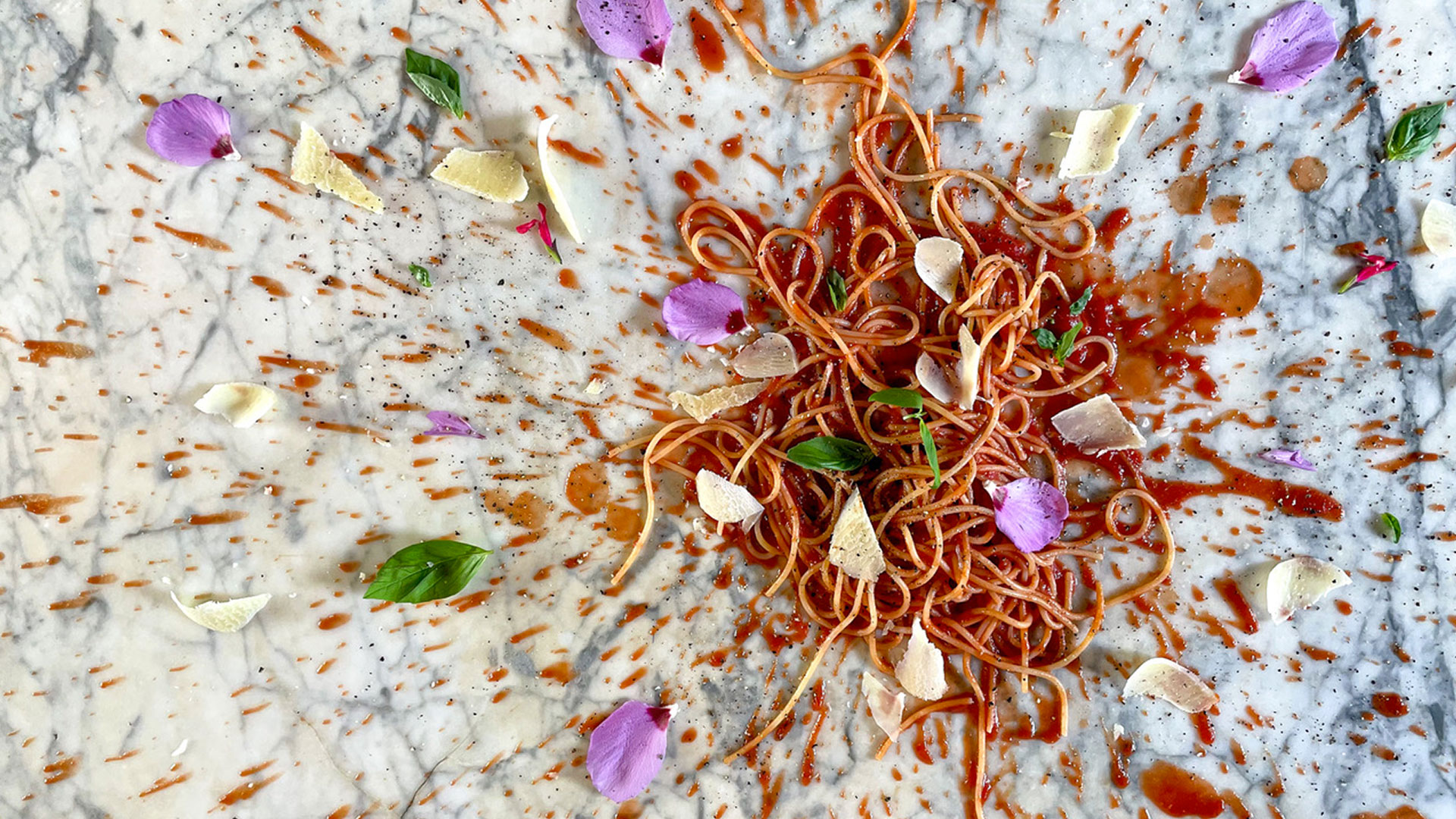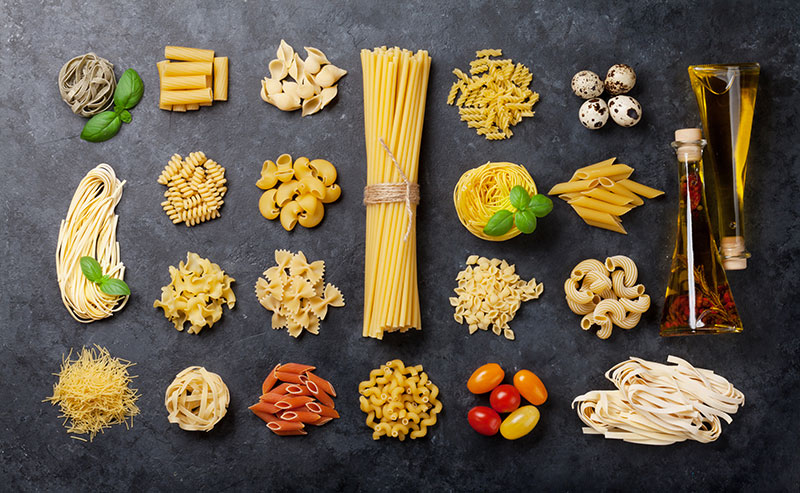

Our article, "Food, Care, and Design: A Timeless Bond at the Dining Table," has achieved remarkable success and sparked boundless curiosity.
We've received numerous inquiries about a globally beloved dish with a surprisingly common theme. Many of you have asked us to delve into the art of plating and share the story behind a universally cherished dish: pasta, probably the world's favourite food.
Staying true to the core of our mission, which revolves around food preservation, design, and care, we have taken the initiative to offer a modern and comprehensive response, even though we are not culinary bloggers ourselves.
To most Italians, and pasta-loving foreigners, any changes in the way this monument of Italy’s cuisine is served often amounts to outright sacrilege, given a few concessions to fancy toppings and decorations.
Nestled in a shallow plate in a more or less geometric, or disheveled fashion, cheese shavings on top, if applicable, and further seasonings: that’s more or less the standard conception of pasta plating, a paradigm that went unchallenged for well over a century.
But Italian cuisine has evolved, especially haute-cuisine, and so have recipes for pasta, which are ever more innovative, and open to the influences of other cultures.
While that has been generally accepted by Italians, in fact they’re quite proud of this gourmet evolution while not renouncing tradition, plating has remained quite boringly the same.
Fine dining establishments found this situation a bit tight and started experimenting with new ways of presenting Italy’s national staple.
This often equates with smaller quantities of pasta going into each single portion, which in turn means a better carb balance when inserting pasta dishes in modern multiple-course gourmet menus, as opposed to the traditional three courses pattern.
Freeing plating from the pasta clutter also allowed to better honour the glorious supporting-ingredients.
To chefs like Silvio Battistoni, owner of the “Colonne” gourmet restaurant in Sacro Monte, just outside Varese on the Swiss-Italian border, plating is as important an element as the recipe itself in the design of a haute-cuisine dish.
The sketches by local artist Yama refer to his pear and red-prawn ravioli in pomegranate, tomato and herbs infusion served in bone China, and his lacquered celery, walnuts and tuna roe spaghetti presented on a stylish black slab of local slate.
Copyright HOMA 2023
This article is from "des.mag." - Issue No.2, a Homa editorial project to promote design culture.
For further Information and Press Contacts:info@homaeurope.eu
The Remarkable Journey of Pasta
Pasta, the beloved food that graces tables worldwide, holds a special place in our hearts. It's versatile, easy to prepare, and can be dressed up in countless delicious ways. But have you ever wondered where pasta came from and how it became a global sensation? In this blog post, we will take you on a culinary journey through time, from the origins of pasta in ancient China to its widespread popularity today.
Origins of Pasta: A Chinese Connection?
The pasta story begins in ancient China, where noodles made from wheat and rice flour were a dietary cornerstone. While there's a popular myth attributing pasta's arrival in Italy to the famous explorer Marco Polo in the 13th century, this tale lacks substantial evidence.

However, a compelling alternative theory is that pasta might have independently sprouted its roots in Italy. This Italian-born pasta is said to have been a staple in the diets of ancient Etruscans and Romans. Fascinatingly, ancient Roman texts mention a dish known as "lasagna" a flatbread cut into strips and boiled, believed to be one of the earliest forms of pasta.
The enigmatic origins of "filamentous noodles" continue to puzzle us, shrouded in the mysteries of history. Were these delicate strands an indigenous Italian creation, or did they embark on a culinary journey from the Middle East, perhaps carried by the winds of ancient trade routes? And why did Italy, out of all the lands in Europe and the Mediterranean, choose to embrace these noodles as a dietary staple while others remained oblivious to their charms?
One compelling theory suggests the idea of these noodles hitchhiking along the storied Silk Road, venturing from the heart of Central Asia to the bustling markets of Bukhara in the Middle East, where they found their early moniker. From there, the threads of this culinary tale might have woven their way to Italy, possibly guided by the caravans and merchants who traversed the Silk Road.
But history often delights in its enigmatic twists. It's also conceivable that these fine noodles crossed the Mediterranean waves, ushered into Italy by the enterprising Arabs who once held sway over the island of Sicily. Their culinary influence, mingling with Italian traditions, could have birthed the beloved pasta culture we savour today.
In this tapestry of historical conjecture, the true origin story of "filamentous noodles" remains elusive, inviting us to unravel the threads of time and taste that connect Italy, the Middle East, and the distant lands of Central Asia.
The Renaissance of Pasta
Fast forward to the Middle Ages, and pasta had already become a cherished Mediterranean delight, often paired with olive oil and simple ingredients.
Skilled hand-crafted pasta in Italy, shaping it into intricate designs like twisted spirals and bow-shaped farfalle.

The real revolution, however, came in the 18th century with the advent of the first pasta-making machine in Naples.
This innovation made pasta production more efficient and affordable, democratizing access to this delicious staple. To this day, Italy remains one of the world's top pasta producers, offering a mind-boggling array of pasta varieties.

Pasta's Global Odyssey
Pasta's epic journey didn't stop at Italy's borders. In the 19th century, Italian immigrants brought their beloved pasta to the United States, where it quickly captured the hearts and palates of Americans. Soon after, in the early 20th century, pasta ventured even further, making its way to Latin America. It found a warm welcome there and became a dietary cornerstone in countries like Argentina and Brazil.
Today, pasta knows no boundaries. It's cherished globally and available in an astonishing variety of shapes and sizes. From classic Italian staples like spaghetti carbonara and lasagna to modern interpretations like pesto linguine and shrimp scampi, pasta is a culinary playground.
A Pasta for Every Palate
The pasta story is a captivating journey that spans thousands of years and continents. From its ancient Chinese beginnings to its contemporary global appeal, pasta has evolved and adapted to the tastes of diverse cultures.
The next time you twirl your fork around a plate of pasta, take a moment to savour its rich history and the myriad of cultures that have contributed to its development.
Whether you prefer the timeless classics or are eager to explore modern twists on pasta dishes, there's no denying the universal allure of this versatile and delectable food. Share your favourite pasta dishes and experiences worldwide, and let's celebrate the global love for pasta together!
Copyright HOMA 2023- Issued by Federico Rebaudo, General Manager at Homa Europe, October 2023
For further Information and Press Contacts: info@homaeurope.eu
